Piriformis Syndrome and Acupuncture Treatment in Tokyo
Piriformis syndrome is a neuromuscular condition characterized by pain, numbness, or tingling in the buttocks and lower back, often radiating down the leg. It occurs when the piriformis muscle – a small, pear-shaped muscle located deep in the gluteal region – irritates or compresses the sciatic nerve. This condition can significantly impair mobility and quality of life, affecting daily activities such as walking, sitting, or climbing stairs. While not as common as other causes of sciatica, such as herniated discs, piriformis syndrome affects approximately 6 – 8% of individuals with lower back or sciatic pain, according to clinical estimates.
The piriformis muscle plays a critical role in hip movement, connecting the sacrum to the femur and aiding in external rotation, abduction, and extension of the hip. When this muscle becomes tight, inflamed, or spasmodic, it can press against the sciatic nerve, leading to symptoms that mimic sciatica. Piriformis syndrome is often underdiagnosed, as its symptoms overlap with other conditions like lumbar radiculopathy or sacroiliac joint dysfunction. This article provides an in-depth exploration of piriformis syndrome pain, its causes, and how acupuncture – a time-tested modality from Traditional Oriental Medicine (TOM) – can offer effective relief. We’ll also highlight key acupoints used in treatment and provide practical strategies for managing this condition.
- Understanding Piriformis Syndrome Pain
- Defining Piriformis Syndrome Pain
- Causes and Risk Factors
- Impact on Daily Life
- Acupuncture Treatment in Tokyo
- How Acupuncture Works for Piriformis Syndrome
- Scientific Evidence
- Benefits of Acupuncture
- Key Acupoints for Piriformis Syndrome
- Acupuncture Treatment Protocol
- Integrating Acupuncture with Conventional Treatments
- Lifestyle and Preventive Strategies
- Who Should Consider Acupuncture?
- Choosing a Qualified Acupuncturist
- Potential Challenges and Considerations
- Conclusion
Understanding Piriformis Syndrome Pain
Defining Piriformis Syndrome Pain
Piriformis syndrome pain is typically localized in the buttocks but can extend to other areas due to sciatic nerve involvement. The pain is often described as:
Maybe You Need:
- Deep Buttock Pain: A dull, aching, or burning sensation in the gluteal region, often centered near the midline of the buttocks.
- Radiating Pain: Discomfort that travels down the back of the thigh, sometimes reaching the calf or foot, mimicking sciatica.
- Tingling or Numbness: A pins-and-needles sensation along the sciatic nerve pathway, particularly in the leg or foot.
- Stiffness or Tightness: A feeling of muscle tightness in the buttocks, making it difficult to move the hip or leg comfortably.
- Worsening with Activity: Pain that intensifies during activities like sitting for long periods, climbing stairs, running, or squatting, which engage the piriformis muscle.
- Tenderness on Pressure: Discomfort when pressing on the piriformis muscle, often located deep in the gluteal region.
The severity of pain varies, ranging from mild discomfort to debilitating pain that limits mobility. For some, symptoms are intermittent, triggered by specific movements, while for others, chronic pain persists, especially in cases of prolonged muscle dysfunction or nerve compression.

Causes and Risk Factors
Piriformis syndrome can result from several factors that cause the piriformis muscle to become irritated, tight, or inflamed:
- Muscle Overuse or Trauma: Repetitive activities like running, cycling, or prolonged sitting (e.g., in office workers or drivers) can strain the piriformis muscle, leading to spasms or tightness.
- Injury: Direct trauma to the buttocks, such as a fall or impact, can cause inflammation or swelling of the piriformis muscle.
- Anatomical Variations: In approximately 10–20% of individuals, the sciatic nerve passes through or under the piriformis muscle, increasing the likelihood of compression.
- Postural Imbalances: Weak glutes, tight hip flexors, or poor posture can overwork the piriformis muscle, contributing to dysfunction.
- Sedentary Lifestyle: Lack of movement can lead to muscle tightness and reduced flexibility, exacerbating piriformis issues.
- Sacroiliac Joint Dysfunction: Misalignment or inflammation in the sacroiliac joint can strain the piriformis muscle.
Risk factors include being female (due to wider pelvic anatomy), engaging in high-impact sports, having a history of lower back or hip injuries, and prolonged sitting. Occupational factors, such as jobs requiring extended periods of sitting or driving, also increase susceptibility.
Impact on Daily Life
Piriformis syndrome can significantly affect daily functioning. Prolonged sitting, such as during work or driving, often worsens symptoms, making it challenging to maintain productivity. Physical activities like walking, running, or climbing stairs may become painful, limiting exercise and mobility. Chronic pain can also contribute to emotional stress, sleep disturbances, and reduced quality of life. Early diagnosis and treatment are crucial to prevent long-term complications, such as chronic sciatica or compensatory injuries in the lower back or hips.
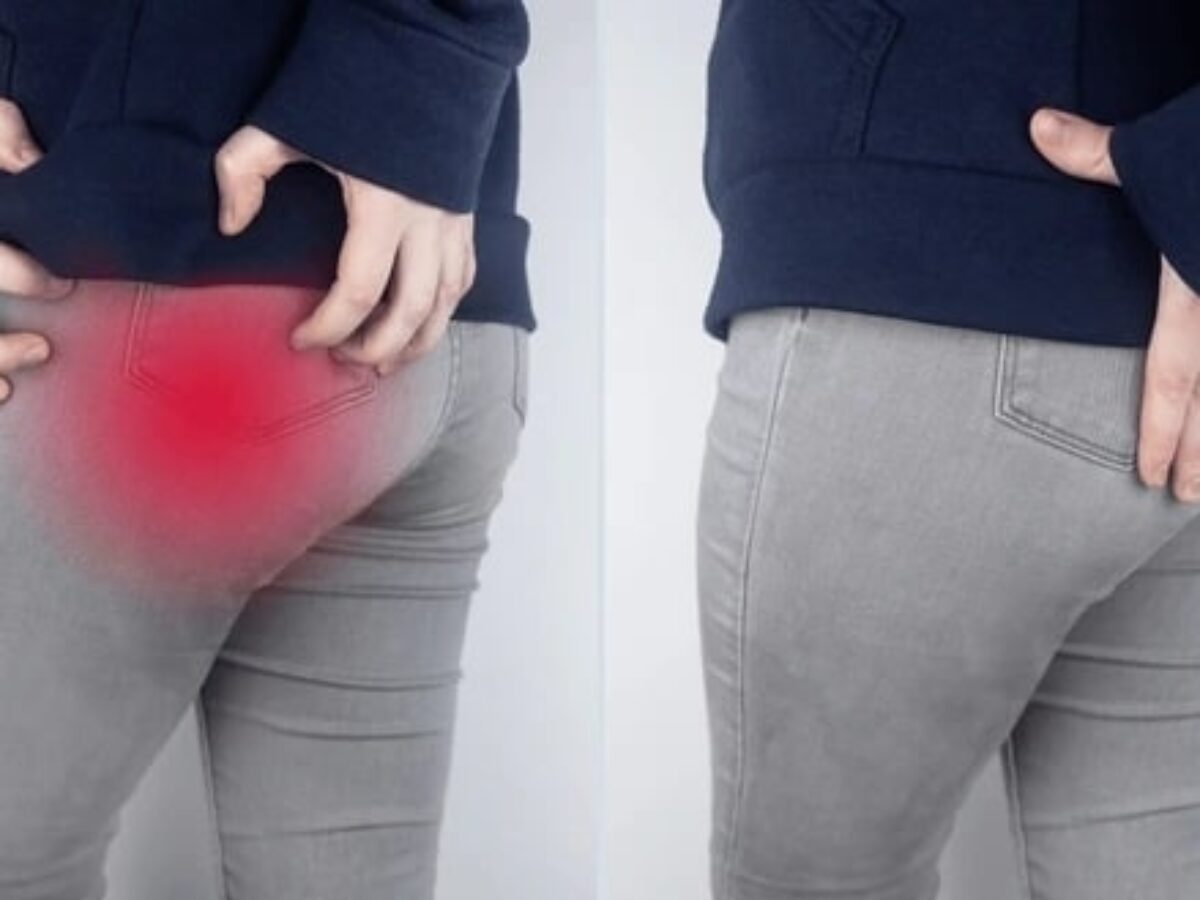
Acupuncture Treatment in Tokyo
Acupuncture, a cornerstone of TOM, involves inserting fine, sterile needles into specific points on the body to restore balance, alleviate pain, and promote healing. For piriformis syndrome, acupuncture is increasingly recognized as an effective, non-invasive therapy to reduce pain, relax the piriformis muscle, and relieve sciatic nerve irritation. By addressing both local and systemic factors, acupuncture offers a holistic approach to managing this condition without the risks associated with medications or surgery.
How Acupuncture Works for Piriformis Syndrome
In TOM, piriformis syndrome is often attributed to blockages in the flow of vital energy and blood, typically along the gallbladder or bladder meridians, which traverse the buttocks and lower limbs. These blockages may result from external factors like cold or dampness, or internal factors like muscle stagnation or organ imbalances. Acupuncture aims to unblock these pathways, harmonize energy, and reduce pain and inflammation.
From a Western medical perspective, acupuncture’s mechanisms include:
- Pain Modulation: Acupuncture stimulates the release of endorphins, serotonin, and other neurotransmitters that act as natural painkillers, reducing the perception of buttock and leg pain.
- Anti-Inflammatory Effects: Needling specific points reduces pro-inflammatory cytokines (e.g., IL-6, TNF-α), decreasing inflammation in the piriformis muscle and surrounding tissues.
- Muscle Relaxation: Acupuncture relieves muscle spasms and tightness by stimulating sensory nerves, which relax the piriformis muscle and reduce pressure on the sciatic nerve.
- Improved Blood Flow: Needling enhances local circulation, delivering oxygen and nutrients to the affected area, promoting tissue repair and reducing stiffness.
- Nervous System Regulation: Acupuncture modulates the central and peripheral nervous systems, calming overactive pain signals and reducing sciatic nerve irritation.
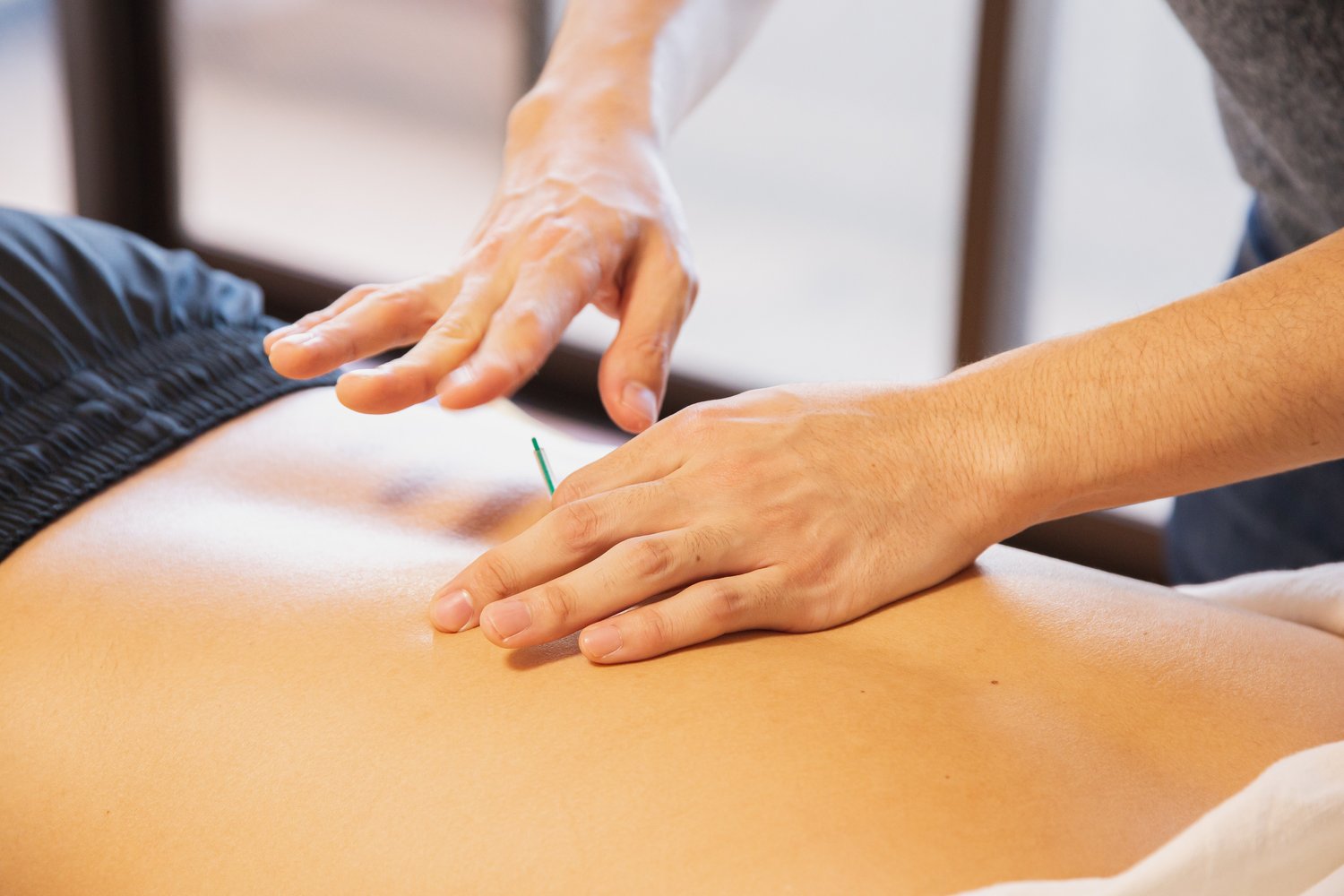
Scientific Evidence
Research supports acupuncture’s efficacy for piriformis syndrome and related conditions. A 2021 study in Evidence-Based Complementary and Alternative Medicine found that acupuncture significantly reduced pain and improved function in patients with piriformis syndrome compared to sham acupuncture. Another study in The Journal of Traditional Oriental Medicine (2018) reported that acupuncture, combined with manual therapy, alleviated sciatic pain and improved hip mobility in 70% of participants after 6–8 sessions.
Electroacupuncture, a variation where mild electrical currents are applied to needles, has shown particular promise. A 2020 trial in Pain Research and Management demonstrated that electroacupuncture reduced pain intensity and muscle tightness in piriformis syndrome patients more effectively than conventional physical therapy alone. These findings suggest acupuncture is a viable option for both acute and chronic cases.
Benefits of Acupuncture
- Non-Invasive: Unlike corticosteroid injections or surgery, acupuncture carries minimal risk of complications and requires no recovery time.
- Drug-Free: Avoids side effects of medications like NSAIDs (e.g., gastrointestinal issues) or opioids (e.g., dependency risks).
- Holistic: Addresses physical pain, muscle tension, and stress, which can exacerbate symptoms.
- Customizable: Treatments are tailored to the patient’s symptoms, TOM diagnosis, and lifestyle factors.
- Complementary: Can be integrated with physical therapy, stretching, or other treatments for enhanced outcomes.
Key Acupoints for Piriformis Syndrome
In TOM, acupoints are selected based on the patient’s symptoms, the underlying cause of piriformis syndrome, and the affected meridians (primarily the gallbladder and bladder meridians, which govern the buttocks and lower limbs). Practitioners use a combination of local points (near the buttocks) and distal points (on other parts of the body) to address pain, muscle tension, and nerve irritation. Below are the key acupoints commonly used for piriformis syndrome:
GB30 (Huantiao)
- Location: In the gluteal region, one-third of the way from the greater trochanter of the femur to the sacral hiatus.
- Benefits: A primary local point for piriformis syndrome, GB30 directly targets buttock pain, relaxes the piriformis muscle, and relieves sciatic nerve compression. It improves hip mobility and reduces radiating leg pain.
- TOM Role: Activates the gallbladder meridian, dispels wind-damp, and promotes Energy and blood flow in the hip.

BL54 (Zhibian)
- Location: On the posterior midline of the buttocks, approximately 3 inches lateral to the sacral hiatus.
- Benefits: Relieves deep buttock pain and sciatic nerve irritation, relaxes gluteal muscles, and improves lower limb circulation.
- TOM Role: Regulates the bladder meridian, clears stagnation, and alleviates lower back and hip pain.

BL40 (Weizhong)
- Location: In the midline of the popliteal crease at the back of the knee.
- Benefits: Reduces lower body pain, including sciatica-like symptoms, and relaxes muscles in the posterior chain (e.g., hamstrings and glutes). It also improves blood flow to the lower extremities.
- TOM Role: Clears heat and resolves blood stasis in the bladder meridian.

GB34 (Yanglingquan)
- Location: On the lateral side of the lower leg, in the depression anterior and inferior to the head of the fibula.
- Benefits: Relaxes tendons and muscles, including the piriformis, and reduces stiffness in the hip and leg. It’s particularly effective for pain caused by muscle tension.
- TOM Role: Influences the gallbladder meridian, promotes smooth Energy flow, and benefits tendons and ligaments.
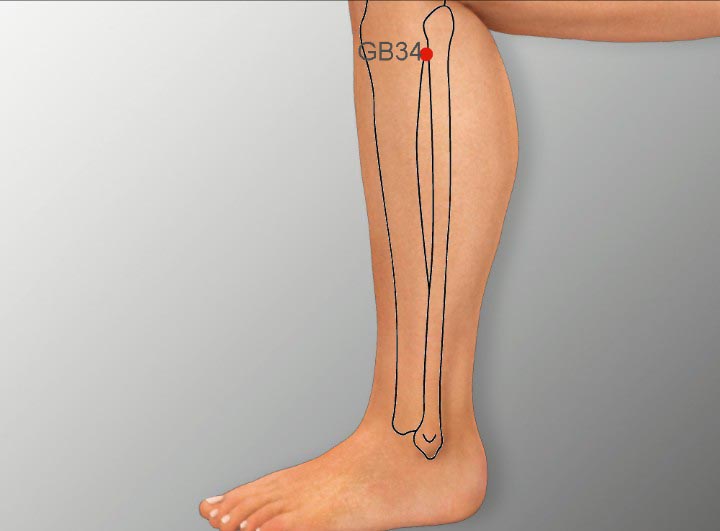
BL60 (Kunlun)
- Location: On the lateral ankle, in the depression between the Achilles tendon and the lateral malleolus.
- Benefits: A distal point that relieves sciatic pain, reduces lower back and leg tension, and improves overall circulation.
- TOM Role: Activates the bladder meridian, dispels wind, and alleviates pain along the sciatic pathway.

LI4 (Hegu)
- Location: In the webbing between the thumb and index finger on the dorsum of the hand.
- Benefits: A powerful distal point for pain relief throughout the body, LI4 enhances the effects of local points and reduces stress, which can amplify pain perception.
- TOM Role: Regulates the large intestine meridian, promotes Energy circulation, and dispels wind.

GB41 (Zulinqi)
- Location: On the dorsum of the foot, in the depression between the fourth and fifth metatarsal bones.
- Benefits: Relieves radiating leg pain and hip tension, supports sciatic nerve function, and promotes relaxation.
- TOM Role: Regulates the gallbladder meridian, clears heat, and harmonizes energy flow.

SP6 (Sanyinjiao)
- Location: On the medial side of the lower leg, three finger-widths above the medial malleolus, posterior to the tibia.
- Benefits: Reduces muscle tension, improves blood flow, and alleviates pain in the lower body. It’s also used to address stress and systemic imbalances.
- TOM Role: Harmonizes the spleen, liver, and kidney meridians, promoting overall balance.
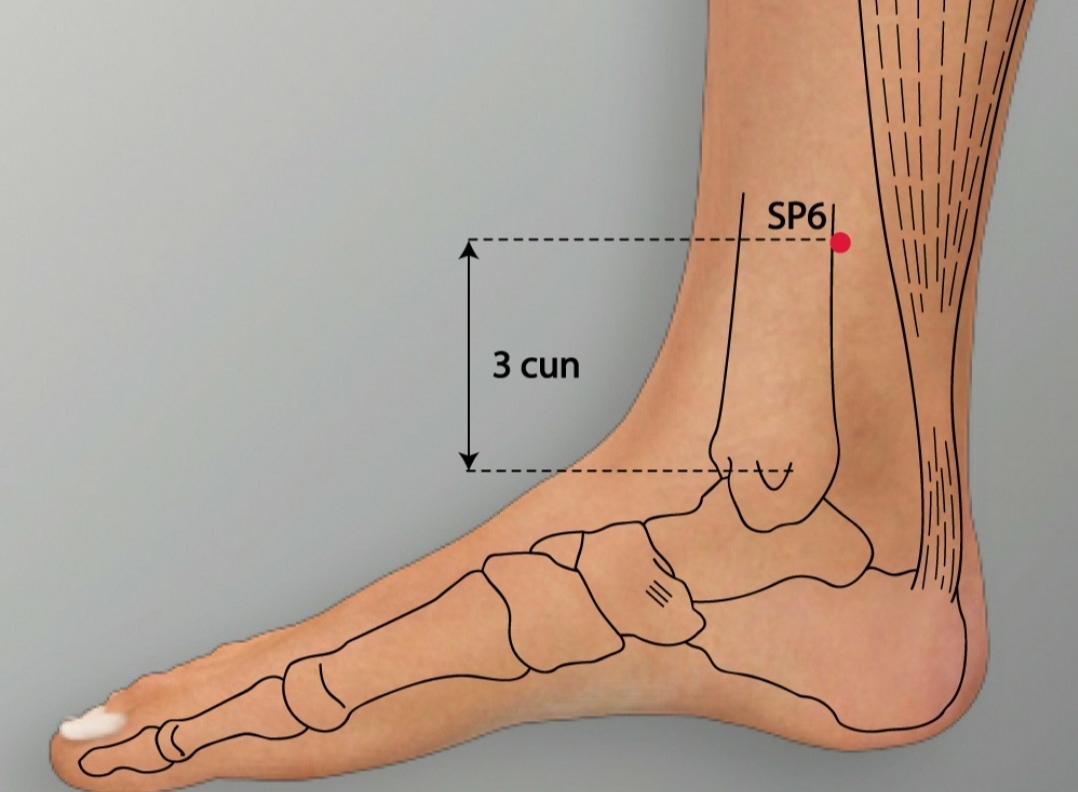
Acupuncture Treatment Protocol
Initial Assessment: A licensed acupuncturist evaluates the patient’s medical history, symptoms, and TOM diagnosis (e.g., damp-cold vs. heat stagnation). Pulse and tongue diagnosis guide point selection.
Session Frequency: Typically 1–2 sessions per week for 6–12 weeks, with maintenance sessions as needed for chronic cases.
Session Duration: 20–40 minutes, with needles inserted to depths of 0.5–3 cm, depending on the point, and retained or gently manipulated.
Adjunct Therapies:
- Electroacupuncture: Enhances pain relief and muscle relaxation by applying mild electrical currents to needles.
- Moxibustion: Applying heat from burning mugwort near acupoints (e.g., GB30, BL54) relieves muscle tightness and improves circulation, especially for cold-type pain.
- Cupping: Suction cups placed over the buttocks or lower back reduce muscle tension and promote blood flow.
- Tui Na: TOM massage may be used to relax the piriformis muscle and surrounding tissues.
Safety: Acupuncture is safe when performed by a licensed practitioner using sterile, single-use needles. Mild side effects like bruising or soreness are rare.
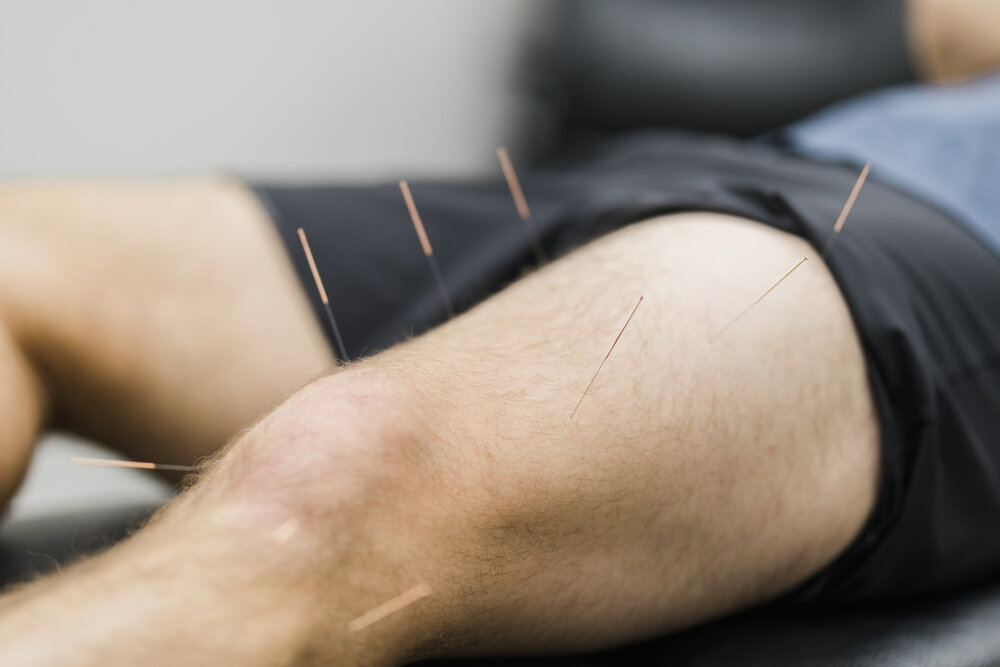
Integrating Acupuncture with Conventional Treatments
Acupuncture is most effective when combined with other therapies to address both symptoms and underlying causes of piriformis syndrome. Complementary approaches include:
- Physical Therapy: Stretching and strengthening exercises for the glutes, hamstrings, and hip muscles improve flexibility and reduce piriformis strain. Common stretches include the piriformis stretch (cross-legged stretch) and hip flexor stretches.
- Massage Therapy: Deep tissue or myofascial release massage can relieve piriformis muscle tension and reduce nerve compression.
- Medications: Short-term use of NSAIDs or muscle relaxants may reduce inflammation and spasms during acute flare-ups, complementing acupuncture’s effects.
- Postural Correction: Ergonomic adjustments, such as using supportive chairs or standing desks, prevent prolonged pressure on the piriformis muscle.
- Chiropractic Care: Adjustments to the pelvis or sacroiliac joint can address misalignments contributing to piriformis dysfunction.

Lifestyle and Preventive Strategies
To enhance acupuncture’s benefits and prevent recurrence, adopt these lifestyle changes:
- Stretching and Mobility: Perform daily stretches targeting the piriformis, glutes, and hip flexors. Examples include the figure-four stretch and pigeon pose from yoga.
- Strengthening Exercises: Strengthen the core and gluteal muscles to support the pelvis and reduce strain on the piriformis. Bridges and clamshells are effective exercises.
- Posture Awareness: Maintain neutral spine alignment during sitting and standing. Avoid crossing legs or sitting on uneven surfaces (e.g., with a wallet in the back pocket).
- Active Lifestyle: Engage in low-impact activities like swimming, walking, or cycling to maintain hip flexibility and prevent muscle tightness.
- Anti-Inflammatory Diet: Consume foods rich in omega-3s (e.g., salmon, chia seeds), antioxidants (e.g., berries, spinach), and anti-inflammatory spices like turmeric. Limit processed foods and sugars.
- Stress Management: Practice mindfulness, meditation, or yoga to reduce stress, which can contribute to muscle tension and pain amplification.
- Heat/Cold Therapy: Apply heat to relax the piriformis muscle or ice to reduce inflammation after activity.
Who Should Consider Acupuncture?
Acupuncture is suitable for most individuals with piriformis syndrome, particularly those seeking natural pain relief or unable to tolerate medications. It’s especially beneficial for:
- Patients with chronic or recurrent buttock/sciatic pain.
- Those who prefer non-invasive treatments over injections or surgery.
- Individuals with limited response to physical therapy or medications alone.
However, acupuncture may not be appropriate for:
- Individuals with bleeding disorders or those on anticoagulants (due to bruising risk).
- Pregnant women (certain points, like LI4 or SP6, are contraindicated).
- Those with active infections or skin conditions at the needling site.
- Patients with severe needle phobia.
Consult a healthcare provider before starting acupuncture, especially if you have underlying conditions or are receiving other treatments.

Choosing a Qualified Acupuncturist
To ensure safe and effective treatment:
- Credentials: Choose a practitioner certified by a recognized body, such as the National Certification Commission for Acupuncture and Oriental Medicine (NCCAOM).
- Experience: Seek acupuncturists with expertise in musculoskeletal conditions or sciatica-related disorders.
- Hygiene: Verify that the clinic uses sterile, single-use needles and adheres to infection control standards.
- Communication: A skilled acupuncturist listens to your symptoms, explains the treatment plan, and adjusts based on your response.
Potential Challenges and Considerations
While acupuncture is generally well-tolerated, patients may encounter:
- Mild Discomfort: Temporary soreness, tingling, or warmth at needling sites, which typically resolves quickly.
- Delayed Results: Pain relief may require 4–8 sessions, especially for chronic cases.
- Cost and Accessibility: Acupuncture may not be fully covered by insurance, though some plans include it for pain management. Check with your provider.
Conclusion
Piriformis syndrome is a debilitating condition that causes buttock pain, sciatica-like symptoms, and reduced mobility, often due to piriformis muscle dysfunction or sciatic nerve compression. Acupuncture offers a safe, effective, and holistic approach to managing symptoms, leveraging key acupoints like GB30, BL54, and GB34 to reduce pain, relax muscles, and improve circulation. Supported by scientific evidence, acupuncture can be a valuable standalone or complementary therapy, particularly when combined with physical therapy, stretching, and lifestyle changes.
For those seeking natural relief from piriformis syndrome, acupuncture provides a drug-free alternative with minimal risks. Consult a licensed acupuncturist to develop a personalized treatment plan tailored to your symptoms and needs. With consistent treatment and proactive lifestyle adjustments, you can alleviate pain, restore mobility, and enhance your quality of life.
Fuji Wellness:
- Address: 132-0031 Matsushima 1-chome, 21-14, Tokyo, Japan
- Chat with us: Click here
- Email: sunnyphamsensei@gmail.com




